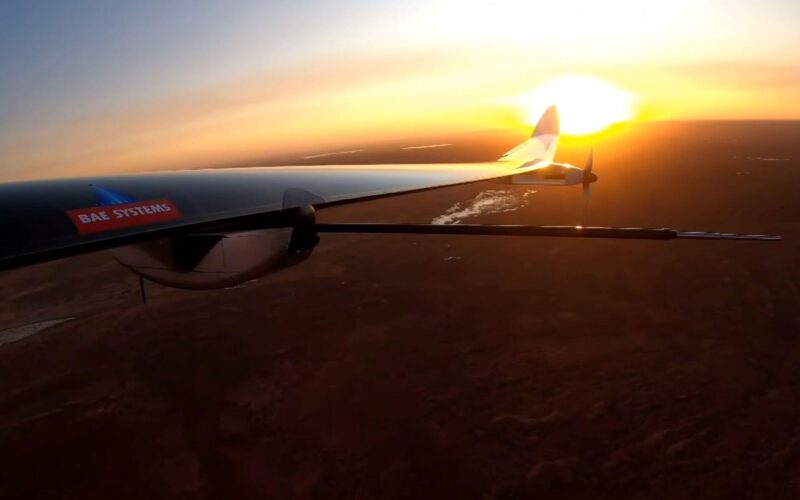BAE announced that their Persistent High-Altitude Solar Aircraft (PHASA-35), a drone capable of loiter for up to one year in the upper atmosphere, has completed critical endurance trials in a harsh simulated environment.
The trials, called “soak” tests, were held in a hangar where the aircraft, with its full communications sensor payload, was subjected to conditions that emulate harsh weather of the stratosphere.
The hangar was provided by Prismatic, while UK’s Defence Science and Technology Laboratory (Dstl) made the payload. Various operations, such as transition from daytime to nighttime, were completed during the trials.
According to BAE, PHASA-35 – solar-powered drone with a wingspan of 35 meters – is intended to bridge a gap between satellites and regular long-endurance drones and can be used as a communications relay, as well as for surveillance, reconnaissance and other tasks.
The maiden flight of PHASA-35 was completed in February 2020. The drone is intended to compete with the Airbus Zephyr family of drones that first took to the skies in 2010 and broke the world record for drone flight endurance in 2018. While rather late to the game, PHASA-35 is larger, heavier and can carry up to 3 times more payload than Zephyr S (15 kg vs Zephyr’s 5 kg).

